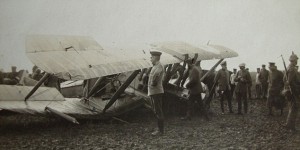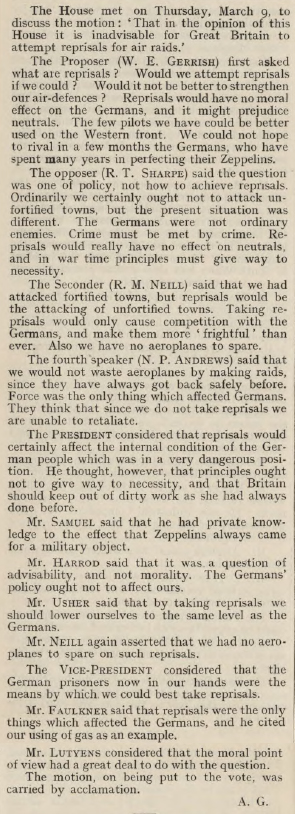Harry George Rodney Bowes-Scott
Harry Bowes-Scott was the only son of Henry Bowes-Scott and Alice Henrietta Rodney. He was born in Chelsea on 15th May 1887 and admitted to Ashburnham in September 1901. After he left the school in Easter 1903 he went to Calcutta, where he worked as a civil engineer for the new partnership Gillanders, Arbuthnot & Co.
There was a fairly strong Old Westminster community in India in the early 20th Century. There were about 80 OWW known or believed to be in India, of whom at least three quarters were either military men or civil servants. There was one OW, Sir Francis Maclean, Chief Justice of Bengal, who hosted reunion dinners every few years. Harry attended several of these dinners and after one of these occasions in December 1912, he wrote a short note to The Elizabethan saying that “although the attendance was small the dinner went off successfully and the usual toasts were as enthusiastically drunk as ever”.
On the 7th August 1915, Harry joined the Indian Army as a 2nd Lieutenant in the Infantry Reserve of Officers. After nearly two months, he was attached to the 29th Punjabis. By March 1916, he was in German East Africa (now Tanzania).
On the morning of the 21st March, some members of the South African Horse had braved the deep and fast-flowing river Pangani and seized Kahe Hill. The Germans attacked the hill heavily in retaliation. The 2nd East African Brigade, including the 29th Punjabis, attempted to cross the Soko-Nissai River with its strong current and crocodile-infested waters. But an error in intelligence meant that the commander, S.H. Sheppard, had not realised that that river formed the main German defensive position.
Under heavy machine gun fire, Sheppard sent two companies of the 29th Punjabis across the river. Lieutenant Harry George Rodney Bowes-Scott and nine other people were killed and a further sixty-six were wounded.
Who should receive Commissions?
Alexander Marchetti
Alexander was born in 1893, in Salford, the son of Greek-born George, an East India merchant. His mother, Alexandra (n├®e Petrocochino) was born in India to Greek parents. The family eventually settled in Paddington and Alexander joined Rigaud’s House in 1908.
He played an active role in all parts of school life, being academically successful and playing football for the school’s 2nd XI. The Elizabethan notes that he spoke on a debate on the topic of whether human happiness increased with civilization — noting that ‘the doctrine of the weakest going to the wall was the most cruel and most inhumane idea ever conceived of’ but, failing to ‘add anything strictly relevant to the motion’
The Elizabethan notes that whilst ‘he had great natural abilities’, reaching the Seventh Form in the school in which pupils prepared for university scholarships, he did not embark on a university career. In December 1914 he enlisted in the of the Royal Fusiliers before advancing to the role of 2nd Lieutenant in the 5th Battalion of the Rifle Brigade. He died a few days after he reached the western front in March 1916.
He is buried in Rue-du-Bois Military Cemetery, Fleurbaix.

Troops of the 28th Battalion, Royal Fusiliers (Reserve Battalion Public Schools Brigade) on a march, November 1915, IWM
OTC
Field operations were arranged with Cranleigh on Thursday, March 9, but had to be postponed, owing to the area being under water, till Tuesday, April 4, when we may hope for better luck.
Reprisals for air raids?
Industrial Compulsion for the duration of the War
Anzac
R. H. M. and P. T. E.
(“The Trifler.” No. 20. February, 1916.)
The inordinate wastefulness of the Government
A message from behind enemy lines
FromThe Elizabethan, February 1916
When G. C. Formilli was brought down wounded within the German lines, one of the German aviators who brought him down flew back over the British lines to drop a note from him to his C.O., enclosing a letter to his mother.
The full tale was recounted in an article in the Daily Mail, 7th September 2012:
It was on January 5, 1916, that the British single-engine biplane, crewed by pilot Lieutenant and observer Lieutenant Geoffrey Formilli, took off on a reconnaissance flight from Lille.
Unfortunately, they encountered legendary flier Oswald Boelcke — known as the father ofthe German fighter air force and the aviator who trained the Red Baron, Manfred von Richthofen — roaming the skies in his Fokker E IV fighter.
Boelcke sprayed the British plane, a BE2c reconnaissance aircraft, with hundreds of rounds from his machine-guns, forcing it to crash land.

The German ace wrote about what happened when he landed and approached his two enemy airmen:
‘I went straight up to the Englishmen, shook hands with them and told them I was delighted to have brought them down alive. I had a long talk with the pilot, who spoke German well. When he heard my name he said with a grin, “We all know about you!” I then saw to it that they were both taken in a car to the hospital where I visited the observer today and brought him some English papers and photos of his wrecked machine.’
Lieutenant Formilli then wrote a letter to a Captain Babington of the Royal Flying Corps that Boelcke dropped over the British lines.
The letter said:
‘Just a line to say that Somervill & I are alright. We had a scrap with a Fokker. Willy got a graze on the side of his head & I got one through the shoulder half way through. We had most of our controls shot through & had to land & crashed very badly. I am in Hospital now & Willy is in Germany. Will you let my people know please, yours G Formilli. PS. It was Boelcke who brought us down.’






